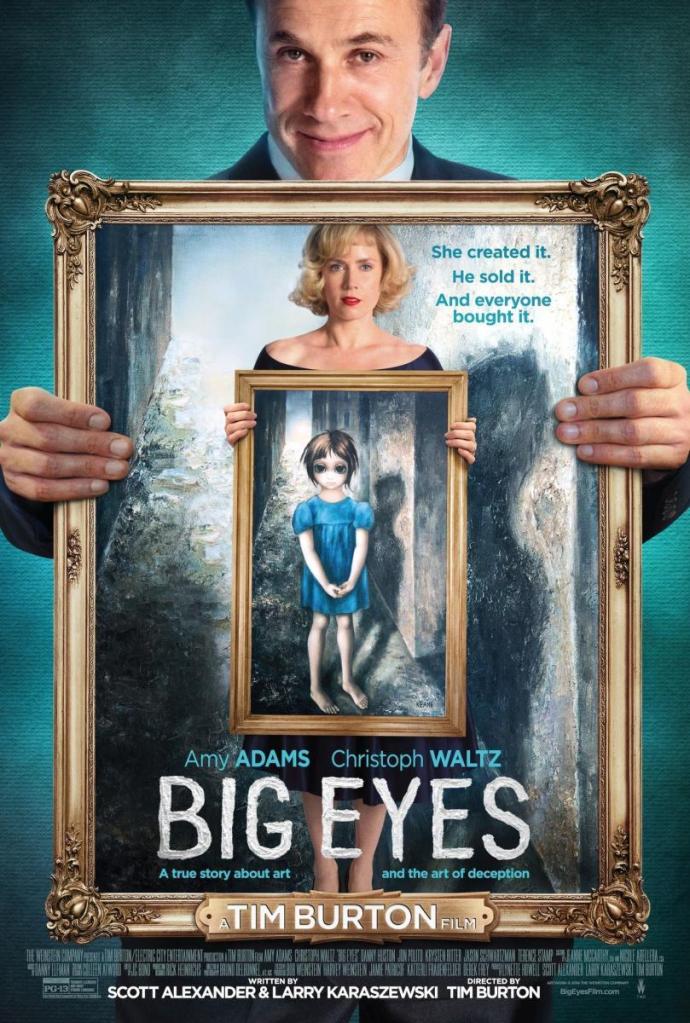Big Eyes is a 2014 film directed and produced by American filmmaker Tim Burton and starring Amy Adams. The film is a biographical drama about the life of Margaret Keane, an American artist famous for her paintings of sorrowful-looking people, especially children, with big eyes.

The film tells how in the late 1950s and 60s, the “big eyes” paintings of Margaret became very popular and generated huge earnings, and how her husband, Walter Keane, took credit for her work. She was convinced to allow him to serve as the public face of the business, but years later, after the couple parted, a court case in Hawaii descending into performance farce as each endeavoured to prove which of them were the true artist.
Big Eyes does not make any judgement on the artistic merit of the paintings, its main objective is to show us that the true creator behind those works deserved to be recognised. The film approaches with the example of Margaret Keane, a very common problems among the women artists: the misattribution.
The film shows how Walter Keane, convinced her wife to let him be the face behind the paintings using the argument that art created by women did not sell well. And the truth is that he was right. It is no secret that the art market never was equally generous with female artists as with male artists.
Other issue approached in the film that unfortunately has been usual among women artists is how marriage negatively affects their careers. Some had to give up her career or lived under the shadows of her partners, while others such as Margaret Keane, had their works attributed to their husbands.
According to some critics the film could have been about women exploitation, since it presents to us how Margaret lived a life of reclusion and loneliness; without close friends, even shutting out her own daughter, and Walter becoming her only conduit to the outer world. Their relationship seems a kind of twisted fairy tale. The critics pointed too that there is a feminist undercurrent to the film, a feeling that someone living under the same circumstances as Margaret Keane did, could not have the tools to even understand how she was dominated by men and how she enforced her own helplessness.
Here it is the trailer of the film:
References:
- The Guardian
- Rolling Stone
- Roger Ebert
- Wikipedia (Margaret Keane – Big Eyes)









You must be logged in to post a comment.